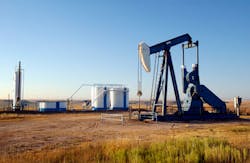Studies reveal major sources of methane emissions from oil and gas sites
Two new studies have identified potentially significant sources of the greenhouse gas methane linked to the oil and gas industry.
Princeton University researchers tested a sample of abandoned oil and natural gas wells in northwestern Pennsylvania, and found that many of the old wells were leaking substantial quantities of methane. With a recent study from Stanford University indicating that there are around three million abandoned wells across the United States, the Princeton researchers believe that the overall contribution of these wells could be significant.
Next, measurements need to be taken across a wide variety of regions in Pennsylvania and also in other states with a long history of oil and gas development, such as California and Texas, they said.
Meanwhile, a team of researchers from the Cockrell School of Engineering at the University of Texas at Austin and environmental testing firm URS have found evidence to suggest that a small number of natural gas wells are responsible for the majority of methane emissions from two major sources — liquid unloadings and pneumatic controller equipment — at natural gas production sites.
Research conducted at well pad sites across the United States revealed that 19 percent of pneumatic devices accounted for 95 percent of the emissions from these devices, and 20 percent of wells with unloading emissions that vent to the atmosphere accounted for 65 percent to 83 percent of those emissions.
As natural gas production in the United States continues to increase, this study helps provide a clearer picture of methane emissions from active natural gas production sites.
